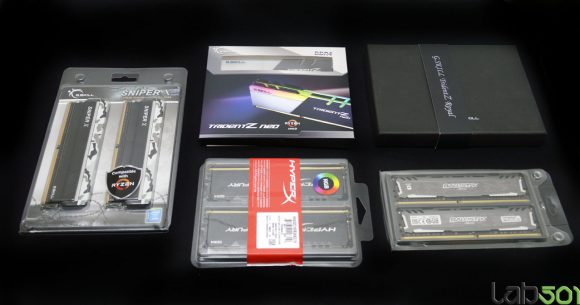TheLostSwede
News Editor
- Joined
- Nov 11, 2004
- Messages
- 18,934 (2.50/day)
- Location
- Sweden
| System Name | Overlord Mk MLI |
|---|---|
| Processor | AMD Ryzen 7 7800X3D |
| Motherboard | Gigabyte X670E Aorus Master |
| Cooling | Noctua NH-D15 SE with offsets |
| Memory | 32GB Team T-Create Expert DDR5 6000 MHz @ CL30-34-34-68 |
| Video Card(s) | Gainward GeForce RTX 4080 Phantom GS |
| Storage | 1TB Solidigm P44 Pro, 2 TB Corsair MP600 Pro, 2TB Kingston KC3000 |
| Display(s) | Acer XV272K LVbmiipruzx 4K@160Hz |
| Case | Fractal Design Torrent Compact |
| Audio Device(s) | Corsair Virtuoso SE |
| Power Supply | be quiet! Pure Power 12 M 850 W |
| Mouse | Logitech G502 Lightspeed |
| Keyboard | Corsair K70 Max |
| Software | Windows 10 Pro |
| Benchmark Scores | https://valid.x86.fr/yfsd9w |
I figured I'd share this here, as I think quite a few people would be interested in reading this and it's the first site I've seen that has done a comparison between different memory types on Ryzen 3000.
It would seem that there's a difference between the various memory types, even if it's rather small, even when pushed to the limit.
With B-dies it would appear you need to hit really low timings to get the best latencies, whereas Hynix is a tad more forgiving and Micron seemingly also being a bit more forgiving, but neither can hit as low latencies and Samsung if you can hit the right timings.


 lab501.ro
lab501.ro
It would seem that there's a difference between the various memory types, even if it's rather small, even when pushed to the limit.
With B-dies it would appear you need to hit really low timings to get the best latencies, whereas Hynix is a tad more forgiving and Micron seemingly also being a bit more forgiving, but neither can hit as low latencies and Samsung if you can hit the right timings.


AMD Ryzen 3000 DDR4 Scaling – Part II – Samsung B-Die vs Micron E-Die vs Hynix CJR – English version
Samsung B-Die vs Micron E-Die vs Hynix CJR One of the main changes that came with the launch of the X570 chipset, along with the launch of the third generation Ryzen processors, was the way …
Last edited:







 Hynix "won" in aida latency in the ryzencalc-test, but samsung was often 5% ahead in gaming, mainly due to tRFC.
Hynix "won" in aida latency in the ryzencalc-test, but samsung was often 5% ahead in gaming, mainly due to tRFC.